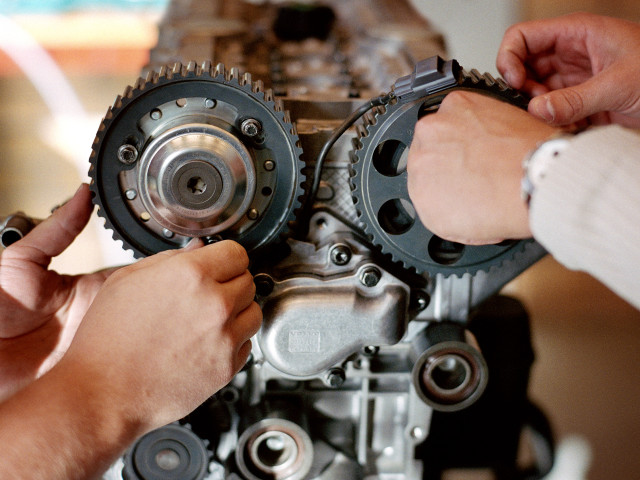Vehicle types, structure, use and demands. Vehicles role in transportation. Requirements for vehicles. Wheels, tires and rolling resistance. Brakes. Innovations and patents. Drivetrain. Chassis. Rail vehicles. Terminals and signalling. Vehicle-track interaction. Statistical design of experiments. Vehicle dynamics and comfort. Traction Technology, energy and environment. Future trends.
SD2221 Fordonssystemteknik 8,0 hp

Information per kursomgång
Information för HT 2025 Start 2025-08-25 programstuderande
- Studielokalisering
KTH Campus
- Varaktighet
- 2025-08-25 - 2025-10-24
- Perioder
HT 2025: P1 (8 hp)
- Studietakt
67%
- Anmälningskod
50595
- Undervisningsform
Normal Dagtid
- Undervisningsspråk
Engelska
- Kurs-PM
- Kurs-PM är inte publicerat
- Antal platser
Max: 40
- Målgrupp
- Sökbar för: Alla Civilingenjör program i årskurs 3 och alla Masterprogram under förutsättning att kursen kan ingå i programmet.
- Planerade schemamoduler
- [object Object]
- Schema
Kontakt
Kursplan som PDF
Notera: all information från kursplanen visas i tillgängligt format på denna sida.
Kursplan SD2221 (HT 2018–)Innehåll och lärandemål
Kursinnehåll
Lärandemål
This introductory course will give you knowledge of vehicle system technology, and the vehicles role in the transport system and in society.
The aim of the course is to give the student a basic knowledge on road and rail vehicle design and performance.
After a completed course you should be able to:
- formulate problems and apply the methodology in the vehicle sector to seek and evaluate solutions
- apply knowledge and skills acquired during the studies, on problems in vehicle technology
- describe vehicles role in transportation
- describe vehicle types, structure, use and requirements
- describe vehicle systems, sub-systems and their function
- describe how vehicles effect the environment on local, regional and global level
- describe vehicle forces and its relation to weight, air resistance, rolling resistance, etc.
- calculate start, acceleration and retardation of vehicles,
- have basic knowledge on vehicle dynamic performance and comfort,
- describe vehicle development from a systems engineering perspective, from market, to requirements and product development. Innovations and patents.
- discuss the trends and future potential of vehicles
Kurslitteratur och förberedelser
Särskild behörighet
Fundamentals of mechanical and electrical engineering.
For "single course students":150 university credits (hp) In engineering or natural sciences and documented proficiency in English corresponding to English B.
Kurslitteratur
Course literature will be available in BILDA by Div. of Vehicle Dynamics and Div. of Rail Vehicles, KTH.
Examination och slutförande
Betygsskala
Examination
- INL2 - Inlämningsuppgift, 4,0 hp, betygsskala: P, F
- TEN1 - Tentamen, 4,0 hp, betygsskala: A, B, C, D, E, FX, F
Examinator beslutar, baserat på rekommendation från KTH:s handläggare av stöd till studenter med funktionsnedsättning, om eventuell anpassad examination för studenter med dokumenterad, varaktig funktionsnedsättning.
Examinator får medge annan examinationsform vid omexamination av enstaka studenter.
När kurs inte längre ges har student möjlighet att examineras under ytterligare två läsår.
Övriga krav för slutbetyg
Written Exam (TEN1; 4 hp; A/F), compulsory.
Exercises (ÖVN1; 4 hp; A/F), compulsory.
The number of points achieved for TEN1 and ÖVN1 are summed. The final grade is based on this sum.
Examinator
Etiskt förhållningssätt
- Vid grupparbete har alla i gruppen ansvar för gruppens arbete.
- Vid examination ska varje student ärligt redovisa hjälp som erhållits och källor som använts.
- Vid muntlig examination ska varje student kunna redogöra för hela uppgiften och hela lösningen.